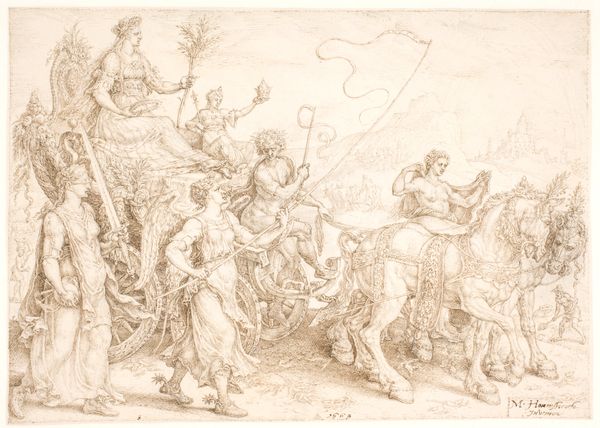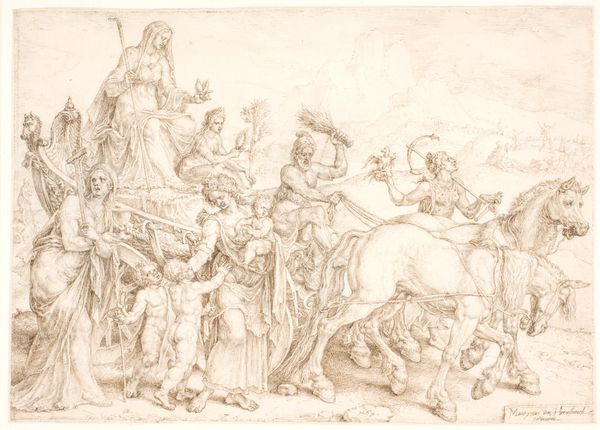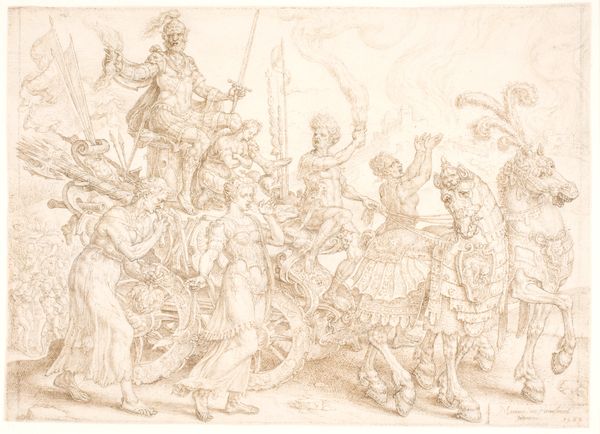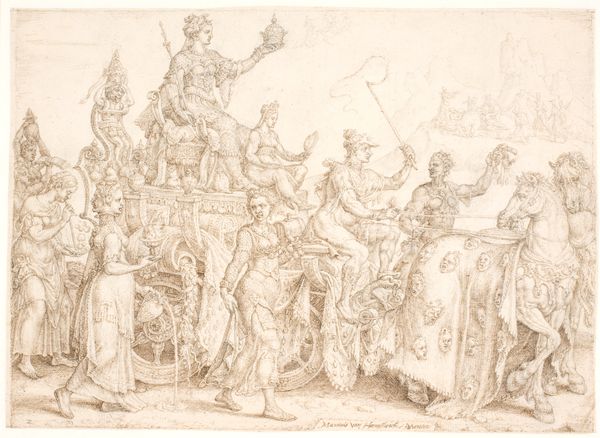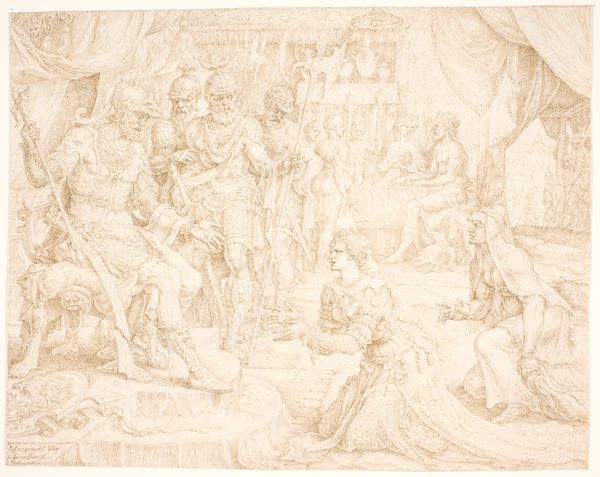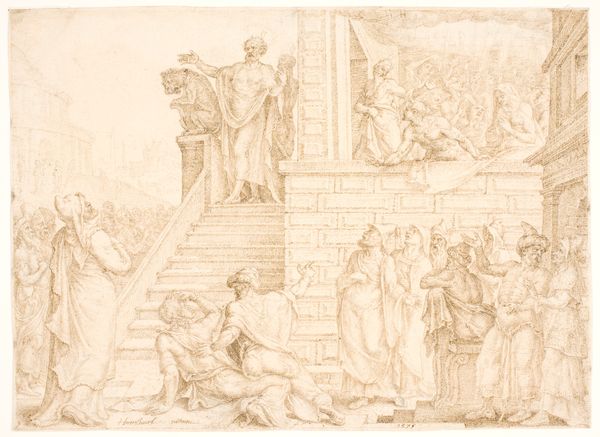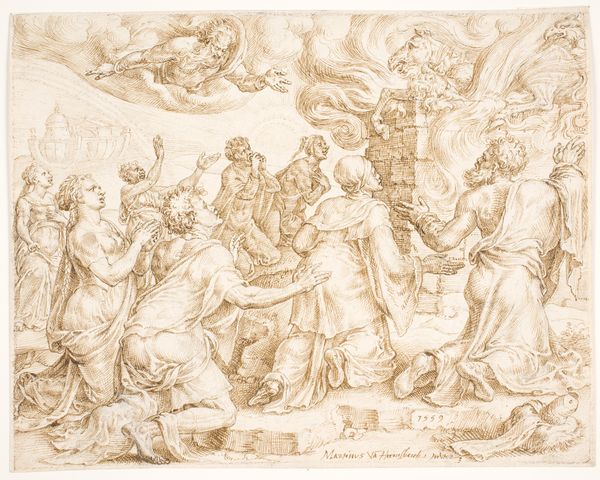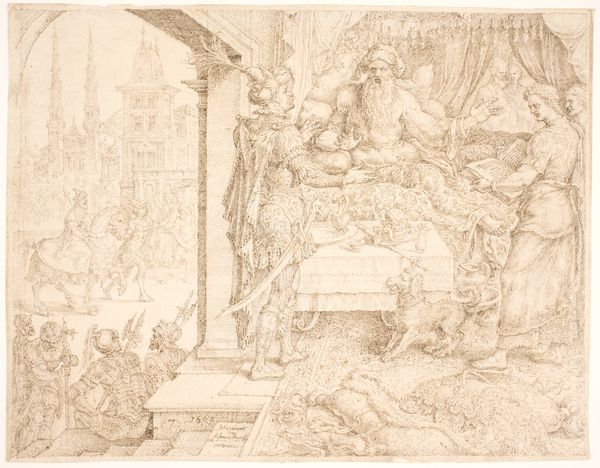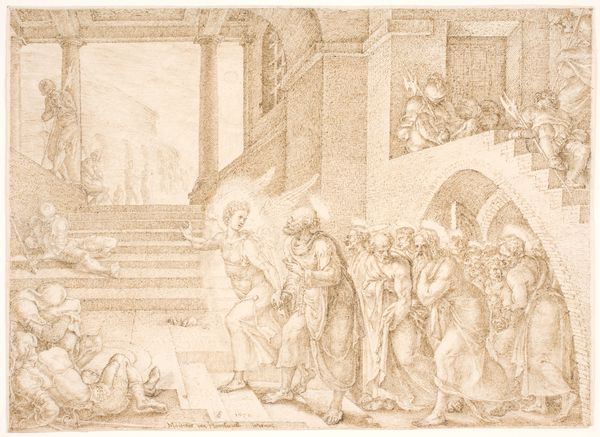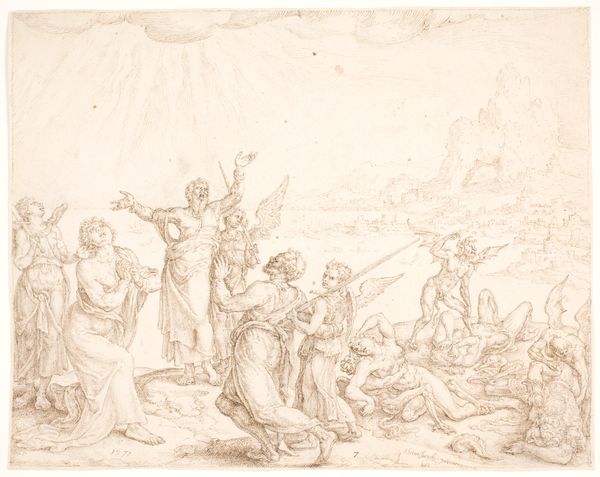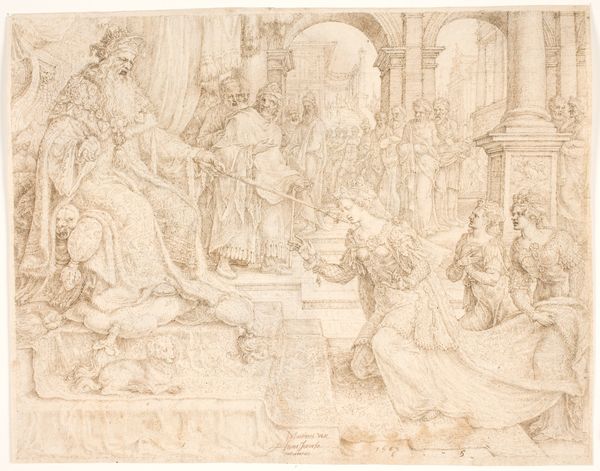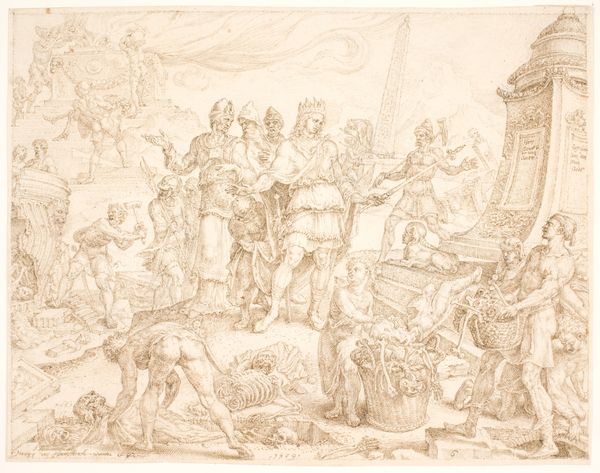
drawing, ink
#
drawing
#
allegory
#
mannerism
#
figuration
#
ink
#
history-painting
Dimensions: 198 mm (height) x 275 mm (width) (bladmaal)
Curator: This is Maarten van Heemskerck's "Triumphal Chariot. Superbia (Pride)" created in 1563. It’s a detailed ink drawing now residing here at the SMK. What catches your eye? Editor: All those layers! It feels like I'm looking at a finely wrought tapestry, yet it’s just ink. Such delicacy conveying something so...overblown. All that grandeur teetering on the edge of cartoonish. Curator: It's a brilliant tension, isn't it? Heemskerck really captures the excesses of Mannerism, doesn't he? Look closely at the figures, their poses, almost violently exaggerated. The driver, whip in hand, could practically leap off the page. Editor: Precisely. And all the material trappings – the chariot itself, ornate beyond reason, the peacocks, even her little mirror...it’s like pride sculpted into form. It seems Heemskerck paid intense attention to detail and the resources allocated to construct an expression of status. Curator: Indeed! Superbia, as the title indicates, is about pride. Think about what they must be putting into all these objects in the piece; we are dealing with craftspeople and laborers producing it, as well as the artists themselves and what goes into their products. The central figure, seated regally in the chariot, holds a mirror reflecting not outward beauty, but inner vanity. Notice how the procession occurs within a cityscape also built upon human vanity: grandiose architectural achievements serve to highlight Superbia as not just individual hubris, but societal excess. Editor: A very conspicuous consumption and a system of excess on display. The entire scene becomes almost claustrophobic; all that ornament, those strained figures...it lacks air. Are we to assume from his representation of Superbia that van Heemskerck wants to express this discomfort? Curator: Perhaps it’s a warning. A memento mori veiled in allegory. By grounding pride in earthly materials – beautiful, skillfully rendered materials, no less – he reveals its fragility. He underscores how readily something so impressive can crumble. Or be critiqued and subverted through the very act of artistic labor. Editor: I love that. This reminds us, after all, how even moral pronouncements are deeply embedded within a material world of production and consumption. Curator: Absolutely. It just reminds me that what we perceive and what truly exists can be very separate. And perhaps van Heemskerck aimed to explore and illuminate that disjunction for us here.
Comments
No comments
Be the first to comment and join the conversation on the ultimate creative platform.
